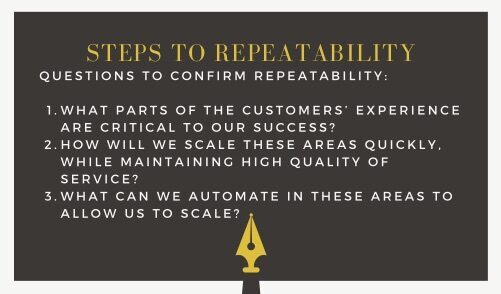Ever wonder what the term “growth hacking” means?
That might sound like a stupid question, but to be honest I wasn’t sure myself when I first began my business.
It seemed like some magical new formula to business success.
It isn’t.
So why does the phrase get tossed around boardroom tables like a hot potato? As if everyone knows exactly what the term means, and how to go about it?
Most don’t.
That’s the question I set out to answer… What I found was that although the term may be relatively new, the philosophy behind it isn’t.
The term was originally coined by Sean Ellis in 2010 to describe his job. Sean had helped to lead LogMeIn and Uproar (tech based companies) from startup to IPO and Sean trying to describe the kind of work he did.
What’s most interesting is that Sean’s role was not one of a marketer or sales person. Instead Sean worked across multiple areas within a business. His intention was to achieve rapid growth on a very small budget.
So growth hacking is a collaboration among all roles that impact business growth, including sales, digital marketing, and product development.
The term growth hacking is most often associated with technology startups where launch and scale must happen quickly to survive. The term, and more importantly the approach, can be seen in several offline companies as well.
Let’s dive into exactly how growth hacking works, and how you can introduce some of the same methodologies in your business.
How Growth Hacking Works (for non-digital marketers)

The idea behind growth hacking is to bring a product (most commonly software) to market as quickly as possible. Measure the uptake and interest in the market, then make ongoing adjustments to quickly scale and grow demand (and the sales).
Think about Uber, Facebook, Zoom, or any other modern-day, software-based business. They were launched and scaled to enormous heights very quickly, becoming a household name seemingly overnight.
Also, in these examples, you can see just how dominant the brand can become in the process. For example, you might tell a colleague you “have a Zoom meeting” rather than a “virtual meeting”.
We’ve seen this same level of brand saturation before. Iconic brands like Ski-Doo and Kleenex (believe it or not, they’re called tissues, not Kleenex) have had the same impact.
What’s different, however, is that often this level of brand dominance achieved in the past was achieved through advertising and plenty of it.
Applying Growth Hacking to Your Business
Step 1: What do your customers want?
The first step in the growth hacking process is to start with something your customers want.
This may seem obvious, but so many companies have brought products to market that were fully tested, developed, and packaged ready to sell, only to have them fall flat.
Do you remember New Coke, Crystal Pepsi, Qwikster, or Facetime Home?
All fully developed and launched products that fell flat on their face.
I still remember New Coke. As consumers, we were outraged that the old coke was being eliminated! So, Coca-Cola quickly re-introduced their longstanding formula as “Classic Coke”, while maintaining the “New Coke” brand.
Fast forward a few years and New Coke was gone, as did the word “Classic” in front of Coke.
If you want to grow quickly with little to no budget, you just can’t afford these kinds of mistakes. Too much time or money to bring a product to the market that customers don’t want will kill a business quickly.
Kodak is another great example.
Remember making “Kodak” moments? Unfortunately, these “moments” disappeared as smartphones with cameras came on the scene.
Suddenly people realized they could make a Kodak moment without the hassle of taking their film for processing, and as a result, bye-bye, Kodak.
Step 2: Who are your customers?

With something created that customers actually want, it’s important to consider who exactly your customer is.
Ultimately, you can’t expect to sell what you have to everyone. You need to be highly definitive on who your ideal customer is, right down to the nth detail. When you do so, you can in turn create marketing that speaks to them, attracts them, and develops a need for your product.
If you’ve ever seen a Gatorade commercial, or Nike, then you’ve seen marketing that is clearly defined for a specific segment.
With a slogan like “Just Do It”, and images of athletes who are in the middle of intense and physically demanding activities, Nike makes it clear as to whom they are going after. Hint: It’s not the elderly or children.
Step 3: Spread the word like wildfire!

With a clear vision of who your customers are and what they need, the next step in growth hacking is to get the word out. Quickly!!
It doesn’t seem all that long ago that Uber arrived, and what was initially just an app quickly became a household name. You didn’t take a taxi anymore, you “took an Uber” or “Ubered it” to get around.
When you clearly define who your customers are and what they need before you bring a product to market, it doesn’t take long to generate buzz.
It’s this buzz that will elevate your brand as more and more customers test or try out what you have to offer to see what all of the hype is about.
Accelerate the Growth Hacking Process
In working through the first three steps, you create the foundation to launch. In these next three steps, you’ll adjust, improve and begin capitalizing on the work done thus far.
Step 4: Create a great customer experience
It’s one thing to create a buzz and attract people to your product quickly on a relatively low budget. If however, their experience doesn’t line up with their expectations, the buzz will die. So will your product.
That’s why step 4 is all about creating a great customer experience.
Look at Netflix as an example. From the moment that I signed up until today, the only time I’m frustrated with Netflix is if I’m having internet issues.
Other than that, my experience has been nothing short of what I expected (a huge selection of movies and TV shows, for a ridiculously low monthly price).
Amazon is another great example. We’ve come to take their vast selection of products and services almost for granted. Yet if you’ve ever had to return a product, you’ll know just how well Amazon treats its customers.
If you ever experienced staying at the Ritz Carlton and visiting Disney, you’ll have experienced an exceptional customer experience. The longevity of both of these brands in highly competitive segments is a testament to just how valuable customer experience is.
If your customers’ experience aligns with the buzz you’ve generated about your product, then brand equity and profitability will follow.
Step 5: Rinse and Repeat
To scale your growth, it’s important to consider how to create repeatability in what you are doing. This while continuing to ensure the experience of your customer remains intact.
Not an easy task.
Essentially, it’s developing the processes and protocols that can be repeated as you add new people and new technology into your approach.
Think of it as striking a balance between scaling and customer experience. I emphasize balance as the key here.
Consider for example that if you can’t scale an activity, then your business will flat line.
On the other hand, if you can scale an activity, but in doing so, it diminishes your customers’ experience, you won’t have customers for long.
A Lesson from Uber
For Uber, ensuring a constant attraction of new drivers is necessary to replace those that leave or are let go, while supporting the company’s growth. Without the ability to scale drivers, Uber’s growth would fall flat.
This said, a driver is the direct link to ensuring a positive customer experience.
So for Uber, providing a timely and simple means for customers to rate their experience was essential. It allowed them to ensure that their efforts to scale and bring on new drivers didn’t result in a depletion of their service quality.
When considering how to scale, it’s important to consider then how people, technology, and process equate to the sale of your end product.
Step 6: Making a Cookie-Cutter Approach

Look at each aspect of your process and then identify which of these three areas will be required in order to scale.
Can you scale with more people?
Can you use technology to scale?
Will you expand the process in order to scale?
Once you’ve identified what and how you will scale, you should consider the following three questions:
Step 6: (the Most Important Step) Make money!
Growth hacking is not successful as a long-term strategy unless you can make money at it.
By identifying what your customers’ needs are at the beginning, you can identify the best means to make money.
So, although I placed this as step six, it really is something you need to consider on a continuous basis. Always be asking yourself, “Can we make money at this? If so, how?”
Get Started Growth Hacking Now!
If you have a desire to start growth hacking, these 6 steps will provide you the roadmap to get started.
Remember, this approach is fit not just for software or tech-based companies, but rather any company who has the desire to grow quickly.
This said, the approach outline above is counter intuitive to how many businesses approach selling their products.
The idea of creating something that one “thinks” the market will like is not a growth hacking approach.
To introduce growth hacking in your company, work through the six steps above. Define first a need in the market, and then who specifically will find your product or service highly appealing.
Create buzz around what you’re doing, and provide an exceptional experience.
Do all of this while ensuring a repeatable process that allows you to make money and blam!, you’re growth hacking!
Sounds easy, and it can be if you start small. Trying to implement an approach to growth hacking across a company can be a little bit like trying to shoehorn an elephant into a Volkswagen.
Getting Results
Imagine bringing a product to market faster than ever before, while still being able to generate money to fund your continued growth and expansion!
No wasted time in product development.
No money tied up in inventory that isn’t moving.
Just a fast lane to the top of your game!
Sure, growth hacking isn’t for everyone. The idea of moving forward with a product or service before making significant sales can scare the pants of any entrepreneur.
But for the non-digital business owner who doesn’t have the time or money to wait for success, growth hacking can be exactly what the doctor ordered.
© Shawn Casemore 2020. All Rights Reserved.



Share This Article
Choose Your Platform: Facebook Twitter Google Plus Linkedin